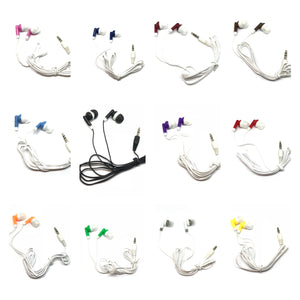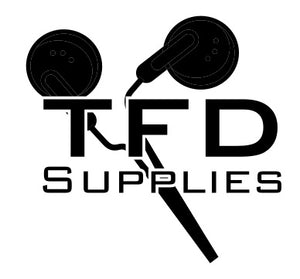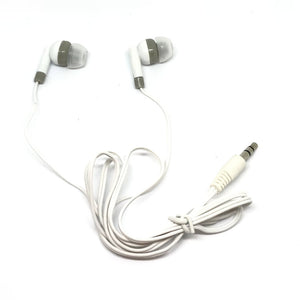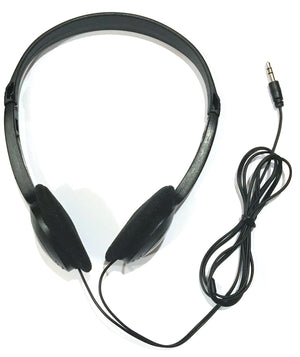The Staffing Shortage Crisis in America’s Jails and Prisons
Introduction: U.S. jails and prisons are facing an unprecedented staffing crisis. From large state penitentiaries to small county jails, facilities nationwide report record-high vacancies and difficulties filling crucial positions. The number of people working in state prisons fell to its lowest level in decades by 2023. In fact, the state correctional workforce has dropped roughly 10% since 2019, and nearly every state’s prison system has seen staffing declines even as inmate populations rebound post-pandemic. This shortage spans all correctional roles – security officers, medical and mental health staff, educators, and support personnel are all in short supply. Below, we examine how these shortages are affecting daily operations, safety, and staff well-being, and what is being done to address the problem.
A correctional officer on duty outside a Nevada prison. Nationwide, many facilities struggle to find enough officers, nurses, teachers, and other staff to operate safely.
Scope of the Staffing Shortage
Staffing shortages in corrections have grown into a national crisis. Recent data show the correctional workforce is the smallest it’s been in decades. State prisons have lost about 12% of their full-time staff between 2013 and 2023 (with most of that drop occurring since 2020). Local jails have not been spared either, with a 7% decline in full-time jail employees since 2020. Overall, more than 64,000 correctional staff have left their jobs since the COVID-19 pandemic began.
These departures have created staggering vacancy rates. Many corrections departments report 20–30% of positions unfilled on a regular basis. In some jurisdictions, the situation is even more dire – Georgia had roughly 50% of its correctional officer jobs vacant in 2022, and a recent review in Texas found some prisons operating with a 70% officer vacancy rate. Florida, West Virginia, and New Hampshire were forced to call in National Guard troops in 2022–2023 to help staff prisons overwhelmed by vacancies. Even the Federal Bureau of Prisons has suffered critical staffing gaps; during the pandemic, over two-thirds of federal prisons lacked sufficient nursing staff to meet medical needs. The shortage is felt across roles: surveys of county jails found nearly 30% had no physician or physician’s assistant on staff, and 50% had no registered nurse on site, illustrating the gaps in medical coverage.
Key Statistic: The number of people working in state prisons hit a 20-year low in 2023. State corrections agencies today employ 11% fewer staff than in 2020, even as prison populations have started rising again.
Impacts on Daily Operations and Inmate Care
When prisons and jails don’t have enough staff, daily operations grind down and incarcerated people feel the effects immediately. One common response to understaffing is to institute frequent or prolonged lockdowns. Many facilities have had to keep inmates confined in their cells for extended periods – sometimes 23 hours a day for weeks on end – because there aren’t enough officers to supervise normal routines. Recreation time, educational classes, vocational training, and religious services are often canceled or sharply reduced during these staff shortages. In short-staffed prisons, it’s not uncommon for people to go weeks without outdoor exercise or programming, losing the routines and activities that help keep order. Visitation and family contact may be limited as well, since there aren’t enough personnel to monitor visiting areas.
Crucially, basic services like healthcare are delayed or neglected. In Georgia, incarcerated individuals reported waiting months for essential medical appointments due to lack of available medical staff and officers to transport them. In some extreme cases, the absence of medical personnel has led to tragic outcomes – for example, a Missouri inmate pulled out his own teeth in 2021 after failing to get a dental appointment amid severe staff shortages. Mental health care also suffers when facilities lack clinicians; many jails and prisons struggle to provide timely counseling or psychiatric services with so few professionals on staff.
Daily logistics become harder too. With too few officers, meal schedules, mail delivery, and routine inmate movements get disrupted. Something as simple as distributing hygiene supplies can fall by the wayside when there aren’t staff available – one formerly incarcerated woman in Georgia recalled going weeks without even being able to obtain basic hygiene items because no one was assigned to hand them out. Overworked staff must triage tasks, so non-emergency needs are often deferred. This creates frustration and tension for the incarcerated population, who feel the lack of normalcy and adequate care. “It’s absolutely detrimental to everyone’s mental stability,” said one Georgia prisoner of the understaffing crisis, noting it led to widespread depression and fights inside the facility.
Safety and Security Risks
Short staffing doesn’t just inconvenience operations – it directly undermines safety for both inmates and staff. Prisons are inherently challenging environments, and when staffing levels drop, the balance of order is disturbed. Fewer officers on duty means slower response times to emergencies or conflicts. Inmates are quick to notice when “backup and relief are scarce” and may take advantage of the situation, as one corrections expert noted. This can lead to spikes in contraband smuggling, assaults, and other illicit activity. Indeed, Mississippi officials have reported that assaults on officers increased in understaffed prisons, with gangs and aggressive inmates exploiting the lack of supervision. In Nevada, a correctional officers’ union even blamed an incarcerated person’s murder on low staffing, arguing that critical posts being vacant set the stage for violence.
Tragically, violent incidents and deaths behind bars have been linked to these staffing shortfalls. In Georgia’s state prisons, which have been acutely understaffed, there were 40 homicides and 38 suicides in fiscal year 2023 – a grim indicator of deteriorating safety. While many factors contribute to such violence, officials and advocates agree that inadequate staffing creates more opportunities for unchecked conflicts and self-harm. Even basic oversight can lapse: in one horrifying case, Georgia prison employees were so overstretched that they failed to notice an incarcerated man’s death for five days, leaving his body undiscovered in his cell. Such incidents underscore how a skeletal crew can literally mean life-or-death matters get overlooked.
For correctional staff, working short-handed is equally dangerous. Officers report that being the only officer supervising 50 or 100+ inmates has become a routine scenario in some prisons, when normally there should be multiple staff present. This increases the risk of assaults on staff, as there may be no one to call for immediate help if an inmate turns violent. Backup might be minutes away (or non-existent), whereas seconds count during a confrontation. Under these pressures, staff themselves face extreme stress and fear for their safety on each shift. Many officers have, at some point, witnessed a colleague or inmate be seriously injured or even killed on the job, and that trauma is only compounded when they know staffing is too thin to prevent the next incident.
Understaffing can also lead to overuse of restrictive measures as a stopgap for safety. As described, wardens resort to lockdowns to control movement when they lack manpower – but keeping people cooped up can fuel further unrest. “You’re going to see a lot more tension... which could lead to more assaults and other kinds of abuses,” one prison policy expert warned, regarding the rise of prolonged lockdowns due to staffing shortages. It’s a vicious cycle: less staff can lead to more disorder and violence, which in turn makes the job even less attractive or sustainable for those remaining on duty.
Collapse in Morale and Staff Well-Being
It’s hard to overstate the toll on morale and the personal well-being of correctional employees caught in this staffing crisis. Burnout is at an all-time high. Those who remain in the job often must work mandatory overtime, back-to-back double shifts, and extra days to cover empty posts. Stories abound of officers working 11–16 days in a row without a break, or pulling 16-hour shifts five days a week. Exhaustion is constant. As Caterina Spinaris, a psychologist specializing in correctional worker trauma, put it: “The job is inherently high risk and grueling... add mandatory overtime and chronic sleep deprivation, it becomes nearly impossible for staff to function effectively”. Not surprisingly, surveys find 70% of correctional officers report their stress levels are negatively impacted by short-staffed workplaces.
High stress and fatigue have several consequences. First, turnover accelerates – burned-out staff quit, which then makes shortages worse for those left behind. Annual turnover rates for correctional officers often range from 20% up to 30%, and one survey found 38% of new staff leave within their first year on the job. Many officers cite overwhelming stress and safety concerns as reasons for resigning, even if the pay is decent. In exit interviews and testimonials, it’s common to hear that people “just can’t do it anymore” – they leave well-paying jobs because the mental and physical strain is unsustainable. This churn means many prisons are perpetually staffed by a junior, less experienced workforce (who then also tend to leave early, continuing the cycle).
Secondly, for those who stay, mental health struggles are on the rise. Correctional staff suffer from PTSD, depression, and anxiety disorders at rates far above the general population. Working in an understaffed, high-pressure environment – where violent incidents, medical emergencies, and constant vigilance are daily norms – can be psychologically devastating. Yet, historically, many correctional agencies have offered little in the way of staff wellness or counseling programs. The result is that officers, nurses, and other prison staff often carry their trauma and stress alone. Morale plummets and cynicism sets in. One veteran described it as “corrections fatigue,” a cumulative burnout where “we just had no energy, we didn’t have the ability to care” anymore.
Finally, low morale can itself become a safety issue. Overworked, sleep-deprived officers are more prone to mistakes or poor judgment on the job. Some may grow indifferent or cut corners in ways that jeopardize safety (for example, not performing rounds rigorously, out of sheer fatigue). Others might overreact out of stress – instances of excessive force or abuse by staff can increase when employees are at a breaking point. As one correctional officer advocacy group leader noted, “It’s a constant battle in your head every single time you walk in that door” when the environment is so strained. This creates a dangerous feedback loop: stressful, brutal working conditions drive staff away, and the fewer staff remain, the more stressful and brutal the job becomes for them and their colleagues.
Why Are We in this Situation? (Root Causes)
A variety of factors have fueled the current staffing shortage in corrections:
-
Low Pay (Historically): For years, correctional officer and staff salaries lagged behind the risks and demands of the job. Although the median annual wage for U.S. correctional officers was about $53,000 in 2023 – roughly on par with other public safety jobs – many institutions offered starting pay that wasn’t competitive enough to attract new recruits. Some states paid rookie officers in the low-$30,000s, which is inadequate given the difficult working conditions. Low pay was repeatedly cited as a top reason officers quit or young people refused to apply. (It’s worth noting some recent wage growth: median salaries grew ~12% since 2020, but much of that has been offset by inflation and doesn’t fully reflect the value of countless overtime hours.)
-
Difficult and Dangerous Working Conditions: Prisons and jails are high-stress, high-risk workplaces by nature. Staff face the threat of violence, verbal abuse, and even life-and-death emergencies every day. During the COVID-19 pandemic, they also faced routine exposure to coronavirus in tightly populated facilities. These conditions were exacerbated by short staffing: mandatory overtime, isolation (many prisons are in remote locations far from staffers’ homes), and seeing colleagues injured or worse all contribute to a negative work environment. The toll of working in an unsafe, trauma-filled environment for long hours cannot be overstated – many people simply decide it’s not worth it. As one lawmaker quipped, after decades in law enforcement he “couldn’t have done 40 minutes in a correctional facility” due to how tough the job is.
-
Competitive Job Market and Shrinking Labor Pool: Unemployment in many regions is low, meaning corrections agencies are competing with other employers for candidates. Physically demanding, hazardous prison jobs have trouble competing with less dangerous opportunities in the private sector. Even within law enforcement, becoming a police officer or border agent (jobs that often pay more or carry more prestige) might seem more appealing than working behind the walls of a prison. The profession also struggles with an image problem – years of negative publicity around mass incarceration and prison conditions have left many with “low regard for the profession,” making recruitment harder. Fewer people are choosing corrections as a career, especially younger generations.
-
High Incarceration Rates and Overcrowding: The demand for prison and jail staff is high because the U.S. incarcerates so many people. Although prison populations dipped in 2020, they are rising again – state prison populations grew about 2% from 2021 to 2022 – and several states have passed tougher sentencing laws that could send more people to prison. This means more inmates to supervise even as staff numbers fall. Many states did not sufficiently invest in hiring or retention over the years when inmate populations were climbing. The result is a system stretched beyond its capacity. Essentially, mass incarceration policies created staffing needs that our correctional institutions are now struggling to meet. As some analysts have pointed out, “understaffing” is, in part, a symptom of trying to maintain an exceedingly large prison system.
-
Pandemic Aftershocks: COVID-19 hit prisons and jails hard – not only causing illness and deaths, but also prompting many staff to leave. Some took early retirements rather than risk exposure; others burned out from emergency conditions. Nearly 93% of the decline in state prison staffing from 2013–2023 occurred during the pandemic years. Additionally, pandemic-related budget crunches in some jurisdictions led to hiring freezes or cuts in 2020–2021, from which departments have struggled to recover. The pandemic essentially turbocharged pre-existing staffing issues, pushing them to crisis levels.
In summary, low compensation, the extreme challenges of the job, competition for workers, a huge incarcerated population, and the lasting impacts of COVID-19 have all converged to create a perfect storm. As a result, hundreds of prisons and jails now face the same dilemma: too many vacant posts and not enough people willing to fill them.
Potential Solutions and Reforms
Addressing a crisis this complex requires a multi-pronged approach. Corrections leaders, policymakers, and staff advocates are proposing a range of solutions to ease the staffing crunch and improve conditions. Here are some of the key strategies being discussed or implemented:
-
Boosting Pay and Benefits: One immediate lever is to make correctional jobs more financially attractive. Many states have approved salary increases, bonuses, and benefit enhancements for correctional employees in the last couple of years. For example, Georgia recently raised starting correctional officer salaries and offered retention bonuses, part of a $250 million initiative to hire new staff. After Georgia’s pay raise, the state saw a spike in job applications and was able to hire 700 new staff in six months (though due to turnover, the net gain was only ~250). Other states – Florida, Minnesota, Pennsylvania, Tennessee, South Dakota, and more – have offered hiring bonuses, overtime pay boosts, or temporary salary hikes to attract officers. Better pay alone won’t solve everything, but it is a critical foundation. Competitive wages, good health insurance, retirement benefits, and incentives like tuition assistance can help draw new recruits and convince current staff to stay. Notably, in 2024 many states gave across-the-board raises (4% in Georgia’s case for FY2025) to correctional workers to help stem the bleeding.
-
Improving Working Conditions: Higher pay needs to be coupled with better day-to-day conditions to actually retain staff. This means tackling the issues that make the job unnecessarily grueling. Reducing mandatory overtime is one priority – some agencies are trying to adjust schedules or bring in part-timers to give overworked staff a break. Prisons are also looking to bolster safety by filling critical security posts so no officer has to supervise an unsafe inmate-to-staff ratio. Providing proper equipment and maintenance is part of this (e.g. ensuring things like radios, alarms, and fire safety gear actually work when needed). Another focus is employee wellness: introducing mental health support, counseling services, and peer support for staff. The Illinois Department of Corrections recently launched a comprehensive staff wellness program with dedicated wellness teams, training, and counseling resources. This kind of initiative aims to make staff feel valued and supported, not just “cogs in a machine.” Some agencies are also re-examining their internal culture – loosening overly rigid “paramilitary” management styles and giving staff a greater voice. Simply put, if you treat employees better, they are more likely to stay. As one former officer noted, there’s been a “blind spot” in how corrections staff are trained and treated within the system, and that needs to change to improve retention.
-
Aggressive Recruitment Efforts: To fill vacancies now, departments are undertaking major recruitment drives. This includes everything from job fairs and social media campaigns to creative tactics. States like Georgia have even partnered with advertising firms to produce recruitment videos and billboards touting the benefits of a corrections career. “Now Hiring” signs have become a common sight near prisons. Corrections agencies are also relaxing some hiring requirements to broaden the applicant pool – for instance, lowering the minimum age in some jurisdictions, dropping college credit requirements, or reconsidering strict background criteria (while still ensuring safety and integrity). Many facilities are increasing their use of part-time and auxiliary staff to plug gaps; the number of part-time workers in state prisons jumped by 45% from 2021 to 2023. Some are establishing cadet programs or partnerships with military veterans’ groups to pipeline people into correctional jobs. And nearly everywhere, sign-on bonuses and referral bonuses are being offered. The message is clear: agencies are trying to make it as easy as possible to join the ranks, by marketing the job and removing barriers to entry – a sharp change from years past when the focus was mainly on stringent screening.
-
Retention and Training Strategies: Hiring new staff won’t help for long if they don’t stick around. Therefore, many prisons and jails are emphasizing retention programs to keep the employees they have. This can involve mentorship for new recruits, so rookies feel supported by experienced officers and less likely to quit early. Some agencies offer career development opportunities – such as fast-track promotions, specialized assignments, or tuition reimbursement for those who want to further their education – to incentivize staff to build a long-term career in corrections. A supportive work culture is also key. Efforts like Illinois’ wellness initiative, which made officer well-being a permanent priority rather than a buzzword, are models for others. Improved training is another factor: better training can boost staff confidence and effectiveness, reducing frustration on the job. The American Correctional Association and other groups have called on facilities to invest in leadership training and staff empowerment, so employees feel competent and engaged rather than overwhelmed. In sum, retention strategies seek to turn corrections from a “revolving door” employer into a place where staff can envision a future.
-
Technology and Automation: With unprecedented staffing shortages, corrections leaders are looking to technology as a “force multiplier.” If certain tasks can be automated or handled by tech, the thinking goes, fewer staff might be required to run the facility day-to-day. At least two states have explored high-tech solutions like security drones and AI camera systems to augment security posts. Nevada, for example, is considering deploying drones to patrol prison perimeters and even issuing inmates wearable tracking devices, in order to offset the shortage of officers on the ground. Other ideas include using robots or AI to monitor surveillance cameras, detect contraband (such as drones that alert staff to illicit drone deliveries), and even respond to minor incidents. While such technology is still experimental, pilot projects are underway. Some prisons use electronic sensors and analytics to monitor cellblocks, alerting human staff to potential conflicts or medical emergencies faster. Telehealth and tele-education are also being expanded – if you can’t have a doctor or teacher on-site every day, perhaps they can appear via video link to provide services remotely, alleviating the pressure on sparse local staff. Technology is not a cure-all and raises its own concerns, but it’s increasingly seen as part of the solution. Investments in reliable communications, surveillance, and automation can help stretch the available workforce further and improve safety and efficiency in the process.
-
Reducing Incarceration (Long-Term): A more systemic solution being floated by some advocates – including some corrections officials themselves – is to lower the incarcerated population so that staffing needs are more manageable. The idea is that by releasing people who no longer pose significant risks and diverting others to alternatives like probation or treatment, prisons would house fewer individuals and therefore require fewer staff. Organizations ranging from the correctional officers’ advocacy group One Voice United to families of incarcerated people have issued joint calls to “reduce the high demand on our prison system” through safe releases and sentencing reforms. Measures such as second-look sentencing laws (which allow re-evaluation and possible reduction of lengthy sentences) and expanding parole for older, low-risk prisoners are suggested ways to responsibly shrink the prison population. A smaller inmate population could alleviate overcrowding and enable existing staff to provide better oversight and services to those who remain. Some states have taken steps in this direction, but many have been reluctant to embrace large-scale decarceration. Nonetheless, experts argue that “understaffing” will remain a chronic issue as long as mass incarceration persists. Right-sizing the system is, in their view, a necessary part of the long-term solution – ensuring that prisons and jails aren’t asked to do more than their workforce can realistically handle.
A recruitment banner outside a Missouri prison highlights “Now Hiring” with promises of great pay and benefits. Many states have increased salaries and offered bonuses to attract correctional officers amid widespread vacancies.
Conclusion
The staffing shortages in U.S. jails and prisons have reached a critical point, affecting every aspect of correctional operations. Daily routines are disrupted, safety is tenuous, and the people who keep facilities running are stretched to their limits. The crisis didn’t emerge overnight – it’s the result of long-standing challenges made worse by recent events – but it has become one of the most pressing issues in the correctional field today.
The good news is that stakeholders are no longer ignoring the problem. Practical steps like pay raises, better recruitment efforts, and investments in staff wellness are underway in many jurisdictions. Innovations in technology offer new tools that might ease staff workloads. And importantly, there is growing recognition that you cannot separate staff well-being from inmate well-being – safe, humane prisons and jails require a healthy, stable workforce.
For those working on the frontlines in corrections, the situation remains extremely challenging, but there is cause for cautious optimism that reforms will bring relief. By addressing the root causes – making these jobs more sustainable and reducing excessive incarceration where possible – the hope is that we can stop the downward spiral. Ensuring adequate staffing is not just an HR issue; it’s fundamental to the safety, security, and rehabilitative mission of our correctional institutions. The coming years will test whether we can turn the tide on the staffing crisis, but the efforts now in motion are an important start toward stabilizing America’s jails and prisons for both staff and those in their custody.
Sources: Recent reports and data on correctional staffing (2023–2025) have informed this analysis, including journalism by The Marshall Project, Stateline/Pew, NPR, and research by the Prison Policy Initiative, Vera Institute, and correctional associations.






